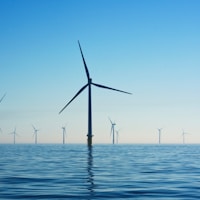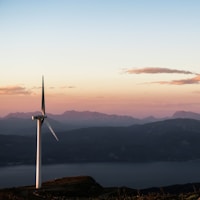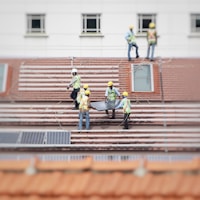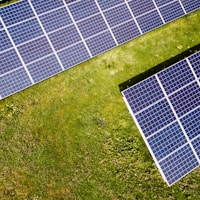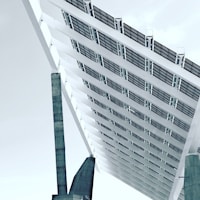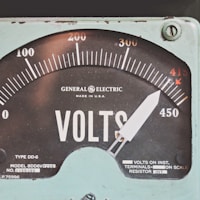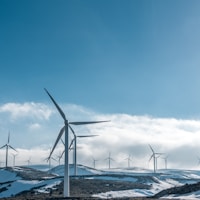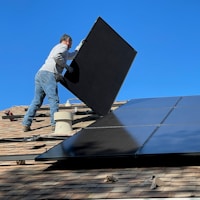



syntezia
- écosystème
- Cercles de médiation & projets
- Financement
- contact
- …
- écosystème
- Cercles de médiation & projets
- Financement
- contact



syntezia
- écosystème
- Cercles de médiation & projets
- Financement
- contact
- …
- écosystème
- Cercles de médiation & projets
- Financement
- contact

Syntezia Commodities & Energy
Our C&E competency center strongly motivated to decarbonize
Renewable energy in Switzerland -
Wind + Solar + Hydropower + Hydrogene = Love !!!
Switzerland's ambitions in terms of wind-generated electricity are more than 60 times greater than current production, i.e. annual production of around 8.9 TWh.
This would cover 19% of current annual needs, including 9% in the autumn and winter months.
A 2020 study analyzes the complementary potential of solar and wind power as a hybrid source of renewable energy (RE) in Switzerland, and highlights the complementarity of these RE sources on different scales. On a seasonal scale, it is shown that photovoltaics (PV) produce three-quarters of their energy during the summer half-year, while wind power generates two-thirds of its energy during the winter half-year. Complementarity is also on the agenda, as we can see that on a national level, the two aggregated production sources have not simultaneously exceeded half of their rated power.
The same study looks at the advantages of combining solar and wind power in terms of load factor. The load factor for these two generation sources is relatively low compared to that of centralized power generation, such as nuclear power. The complementary nature of PV and wind power, combined with appropriate clipping, makes it possible to significantly increase the value of this load factor by limiting energy losses.
The combination of these two renewable sources, combined with storage, would enable us to achieve the equivalent load factor of nuclear power.
of nuclear energy. Complementarity between solar and wind
wind power is essential if we are to maximize the benefits of these renewable sources.
Together, PV and wind power can achieve results that are unattainable individually.
Why digital and visual twins are part of the solution ?
Digital twins are equally important for wind energy as they are for solar energy, offering a range of benefits that can enhance the efficiency and performance of wind energy systems.
Essential for wind energy
A digital twin of a wind turbine or wind farm is a digital model that continuously self-adjusts remotely, using available data measured on the wind farm and accessible via the network. The twin makes it possible to monitor the evolution of the wind farm, optimize control and production, and plan maintenance operations.
Digital twins play a vital role in the wind energy industry bysupporting design optimization, real-time monitoring, predictive maintenance,
turbine control, resource assessment, training, scalability, and cost savings.
These benefits contribute to making wind energy systems more reliable,
efficient, and economically viable, thereby accelerating the adoption of clean
and renewable energy solutions.
Design and Optimization: Digital twins allow wind energy developers and engineers to
create detailed computer-based replicas of wind turbines and wind farms.
By simulating different designs and configurations, they can optimize the
layout and placement of turbines to maximize energy capture and minimize
interference between turbines. This iterative process helps in identifying
the most efficient design and positioning, leading to higher energy output
and better resource utilization.- Performance Monitoring and Predictive Maintenance: Virtual twins enable real-time
monitoring of the wind energy system's performance. Data from sensors on
turbines can be fed into the virtual twin model to analyze and compare
actual performance against expected performance. This continuous
monitoring allows for early detection of operational issues, potential
failures, or underperforming components, enabling predictive maintenance
and reducing downtime. By addressing problems proactively, wind energy
operators can optimize energy production and minimize costly repairs. - Turbine Control and Adaptation: Digital twins facilitate better control and adaptation of
wind turbines based on real-time data. By integrating weather data and
other environmental parameters into the virtual twin, wind energy
operators can adjust turbine settings to optimize energy production
according to prevailing wind conditions. This dynamic control system
ensures the turbines are operating efficiently in changing environments. - Resource Assessment and Planning: Wind energy systems are heavily influenced by
local wind patterns and other geographical factors. Digital twins enable
developers to assess the wind resources in a specific location accurately.
This data-driven approach helps in better planning and designing wind
farms in areas with optimal wind conditions, maximizing energy generation
potential. - Training and Safety: Digital twins offer a safe environment for training wind turbine
technicians and operators. They can simulate various maintenance and
emergency scenarios, allowing personnel to practice and refine their
skills without risk to themselves or the actual equipment. This training
contributes to improved safety and efficiency in wind energy operations. - Scalability and Replication: Like in solar energy, digital twins streamline the process of
replicating and scaling wind energy systems. A successful digital twin of
a wind farm can serve as a blueprint for deploying similar setups in other
locations, simplifying the implementation process and ensuring consistent
performance across multiple sites. - Cost Savings: By using digital and virtual twins, wind energy project developers can reduce
the need for physical prototypes and costly experimentation. The ability
to simulate and analyze different scenarios in advance allows for more
informed decision-making, reducing the risk of design flaws or inefficient.
installations.
Essential for solar energy
Digital and virtual twins are essential tools inthe solar energy industry, providing a platform for design optimization,
real-time monitoring, predictive maintenance, resource management, training,
and cost savings. These technologies contribute to making solar energy systems
more reliable, efficient, and economically viable, thus advancing the
transition to a sustainable and renewable energy future.Digital and virtual twins are important to solar energy because they offer numerous
benefits that can improve the efficiency, effectiveness, and overall
performance of solar energy systems. Let's explore some of the key reasons why
digital and virtual twins are crucial in the context of solar energy:1. Design and Optimization: Digital twins enable thecreation of accurate, computer-based replicas of solar energy systems, including photovoltaic (PV) panels, solar farms, and associated components.
Engineers and designers can use these digital twins to simulate different configurations, test various parameters, and optimize the design before the physical implementation. This iterative approach helps identify the most efficient and cost-effective system design, leading to higher energy production
and better resource utilization.2. Performance Monitoring and Predictive Maintenance:Virtual twins allow real-time monitoring of the solar energy system's performance. Data from sensors and other sources can be fed into the virtual twin model to analyze and compare actual performance against expected performance. This continuous monitoring enables early detection of issues, malfunctions, or underperforming components, facilitating predictive maintenance and reducing downtime. By identifying and addressing problems proactively, system operators can maximize energy output and extend the life of the equipment.
3. Resource Management: Solar energy systems areheavily influenced by external factors such as weather conditions, shading, and other environmental variables. By integrating weather data and geographical
information into the digital twin, solar energy operators can assess how these factors impact the system's efficiency and overall energy output. This information helps in better resource management and planning, optimizing energy production according to varying conditions.4. Training and Simulation: Digital twins offer a safeand cost-effective environment for training solar energy system operators and maintenance personnel. They can practice on the virtual twin to learn how to
handle different scenarios and troubleshoot potential issues. This training contributes to reducing the likelihood of errors and minimizing risks when dealing with the actual system.5. Scalability and Replication: For large-scale solarprojects, digital twins simplify the process of replication and scaling. Once a digital twin of a successful solar installation is created, it can serve as a template for deploying similar systems in other locations. This streamlines the implementation process and ensures consistent performance across multiple sites.
6. Cost Savings: By using digital and virtual twins,solar energy project developers can minimize the need for physical prototypes and reduce experimentation costs. The ability to simulate and analyze different scenarios beforehand enables more informed decision-making, reducing the risk of expensive design flaws or inefficient installations.
- Performance Monitoring and Predictive Maintenance: Virtual twins enable real-time
How can Syntezia Sàrl tools and methods help and support your wind energy project ?
Syntezia C&E lab tools and methods can significantly aid in the development and
implementation of wind energy digital twins.In the real-world environment where technologies and innovations are tested, we co-created with end-users in a collaborative and iterative manner.
When applied to solar and wind energy digital twins, lour Syntezia iving lab tools and methods offer
several advantages:1. Real-World Validation: Living labs provide anactual operational environment for testing and validating the digital twin
models. This ensures that the virtual representations of wind turbines and wind
farms align with real-world performance and behavior, increasing the accuracy
and reliability of the digital twin.2. User-Centric Design: In a living lab, variousstakeholders, including wind energy operators, maintenance personnel, and other
end-users, actively participate in the development process. Their input and
feedback help design the digital twin to meet their specific needs, leading to
a more user-friendly and practical tool.3. Continuous Improvement: Living labs promote aniterative approach, allowing continuous improvement of the digital twin over time. As the wind energy system evolves and new data becomes available, the
digital twin can be updated to reflect the changes and optimize its performance accordingly.4. Data Collection and Integration: Livinglabs offer an opportunity to gather comprehensive and real-time data from the wind turbines and surrounding environment. This data can be integrated into the digital twin, enhancing its accuracy and enabling better insights into the performance and health of the wind energy system.
5. Performance Evaluation: By comparing theperformance of the physical wind energy system with its digital twin in a fab-living lab, operators can assess the accuracy and effectiveness of the virtual
model. This evaluation helps identify any discrepancies and fine-tune the digital twin for improved performance.6. Risk-Free Testing: Syntezia Fablab and Living labs provide a safeenvironment for experimenting with various control strategies, maintenance procedures, and system configurations without any risk to the actual equipment. This reduces the potential for costly mistakes during the testing phase.
7. Technology Demonstration: Livinglabs can serve as showcases for wind energy digital twin technology, allowing potential investors and stakeholders to witness the benefits and potential of such solutions firsthand. This can help in securing support and funding for further development and deployment.
8. Collaboration and Networking: Livinglabs bring together diverse stakeholders, including researchers, industry experts, policymakers, and end-users, fostering collaboration and knowledge exchange. This collaboration accelerates innovation and drives the adoption of wind energy digital twins at a broader scale.
9. Sustainability Testing: With living labs, theenvironmental impact of wind energy digital twins can be assessed. Thisevaluation includes the energy consumption of the digital twin infrastructure
and the overall sustainability of the technology.We are currently working on one specific proposal about hydrogene valley.
To find out more, please write us an email: yves.zieba@syntezia.com

Contact
Yves Zieba
+ 41 22 548 39 75
+ 41 79 561 10 54
Subscribe to Our Newsletter
© 2024 - 2034
Syntezia Sàrl,
Rue de Chantepoulet 10,
1201 Genève,
Suisse
